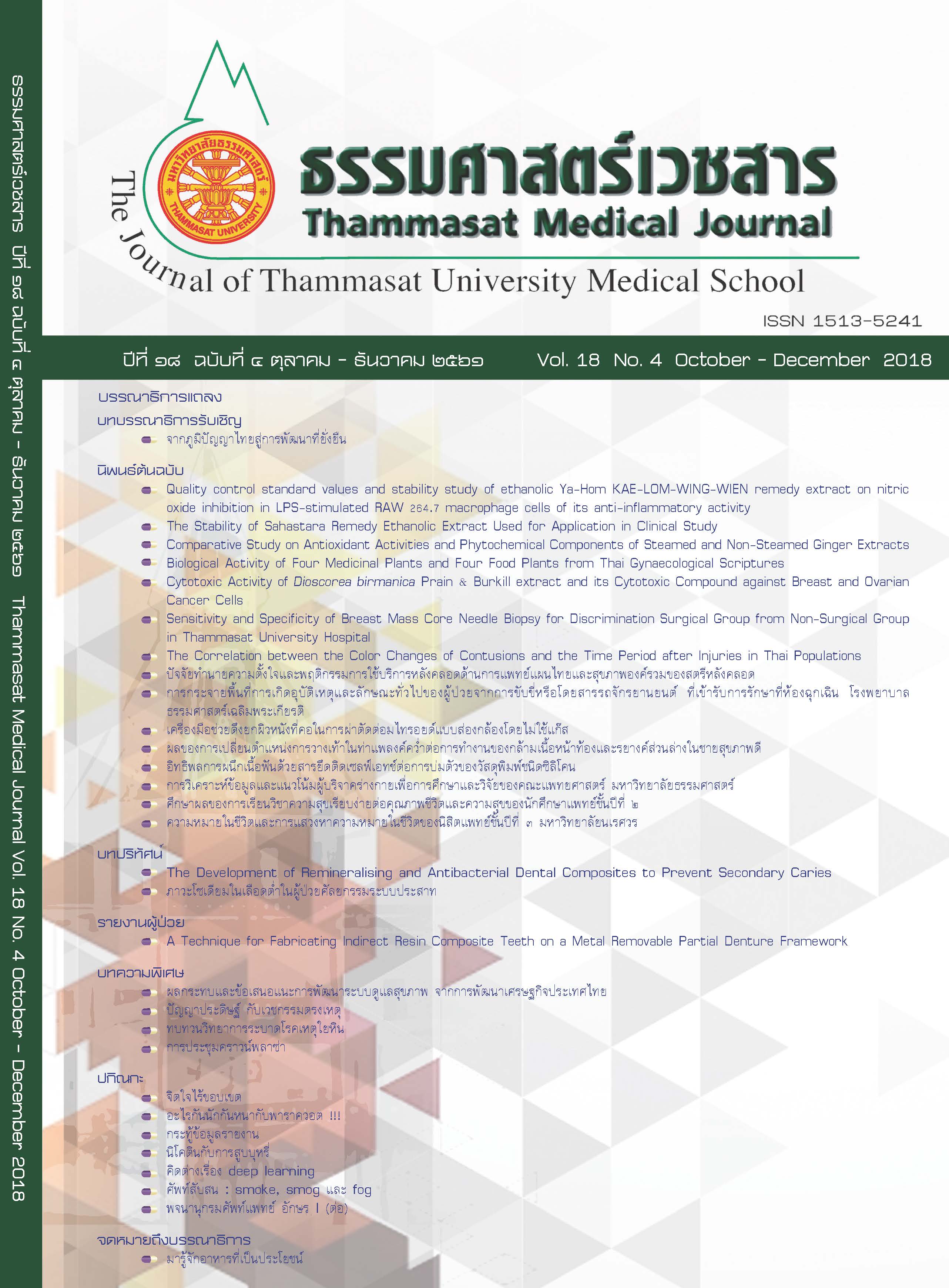Comparative Study on Antioxidant Activities and Phytochemical Components of Steamed and Non-Steamed Ginger Extracts
Keywords:
Antioxidant, Phytochemical compound, Steamed ginger extract, Non-steamed ginger extract.Abstract
Introduction: Ginger (Zingiber officinale Roscoe, Zingiberacae), is a widely-used plant in cooking and medicine in Thailand, listed in the National List of Essential Medicines 2011. In the past, Thai traditional practitioners always steamed the ginger rhizome before drug preparation, but there is no report comparing the biological activity and composition of extracts of ginger prepared from steamed and non-steamed rhizomes. The objectives of this research were to compare antioxidant activity and chemical composition of steamed and non-steamed ginger extracts.
Method: Ginger rhizomes (steamed and non-steamed) were dried and reduced to crude powders. They were macerated in 95% ethanol and boiled in water to produce 4 different extracts, following a 2 x 2 factorial design, with codes: AZOE (steamed ethanol extract), HZOE (non-steamed ethanol extract), AZOW (steamed water extract), HZOW (non-steamed water extract). The DPPH radical scavenging assay and total phenolic content (TPC) by Folin-Ciocalteu’s reagent were used to evaluate and compare all extracts. For determination of phytochemical components, gas chromatography-mass spectrometry (GC-MS) and high performance liquid chromatography (HPLC)were used to identify and quantify the phytochemical compounds.
Results: GC-MS analysis of essential oil and oleoresin of ginger rhizomes showed the major components were zingiberene followed by 10-shogaol, 6-shogaol and gingerol, especially in ethanol extracts. 6-gingerol content was 65.42 ± 4.23 mg/g of extract and 6-shogaol equal to 48.12 ± 2.54 mg/g of extract in the steamed ethanol extract (AZOE) analysed by HPLC. AZOE, extracted according to local wisdom of Thai traditional practitioners showed higher antioxidant activity than HZOE and BHT as positive control with EC50 of 11.69 ± 0.16, 14.10 ± 0.61 and 12.34 ± 0.03 µg/ml, respectively. In addition, AZOE also showed higher TPC values than HZOE with values of 108.60 ± 1.14 and 95.67 ± 0.99 GAE mg/g, respectively. For non-steamed and steamed ginger water extracts (HZOW and AZOW) the result showed low antioxidant activity via DPPH free radical scavenging assay and total phenolic content (TPC) values.
Discussion and Conclusion: These results support the traditional practice of steaming ginger before use. Maceration in 95% ethanol increases both anti-oxidant potency and TPC, and shows the potential for development of a more effective Thai traditional drug from steamed ginger.



